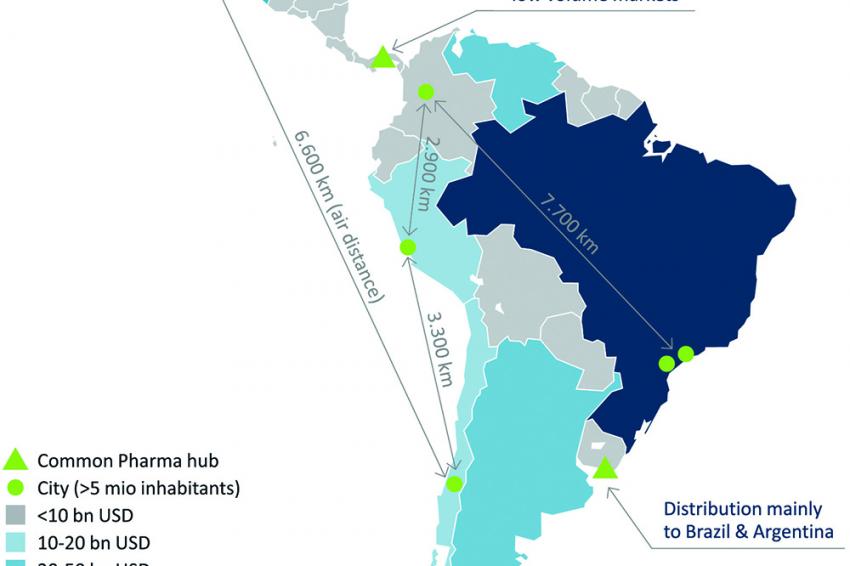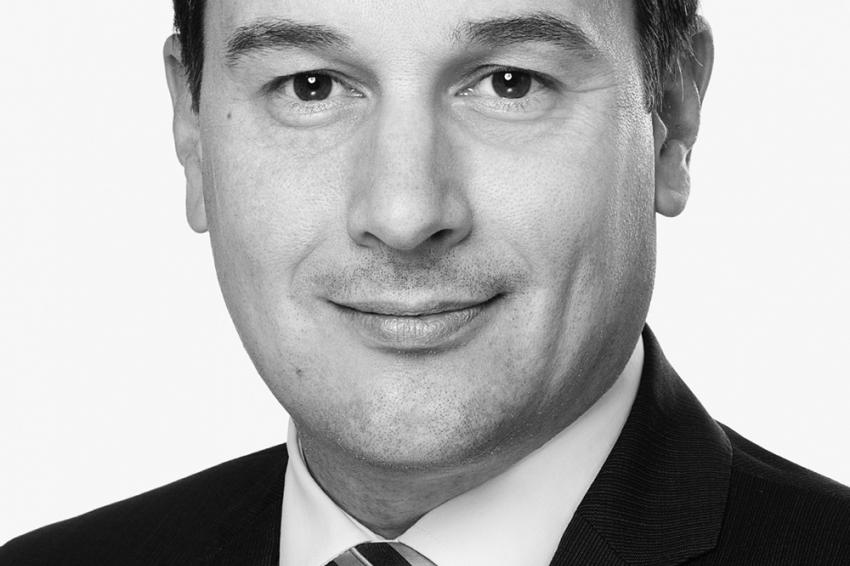Various Challenges for Pharma Logistics
Focus Latin America: Pharma Logistics Has to Overcome Many Obstacles
With a compound annual growth rate of 7.9%, the emerging market of Latin America still offers exciting business opportunities to pharma companies. However, the particularities of the LATAM region create various challenges for pharma logistics. Based on real-life project experience, this article highlights the current situation and recent developments regarding pharma logistics in Latin America.
Compared to mature markets like the US and Europe, where the main growth needs to happen with new products and services, Latin America as an emerging market still offers potential for growth with existing portfolios.
Continuing Positive Outlook
The outlook for the Latin American pharma market remains very positive. Reasons for this are the region’s traditional commitment to healthcare as well as its sheer size and the projected population growth. Additionally, due to stabilizing labor markets, the middle class is expanding further. All of this together will lead to projected growth in the healthcare market from $364.5 billion 2016 to $525.3 billion in 2021 with a compound annual growth rate (CAGR) of 7.9%.
The most attractive market in the region is Brazil, followed by Mexico. However, in other markets such as Argentina and Peru, public healthcare coverage is also broadening, leading to great opportunities for the pharmaceutical industry.
Challenges: Price Pressure, Inflation, Illicit Medicine
The downside is that multinational drug makers are facing increasing pricing pressure and generic drug competition as a result of the cost containment policies launched in several markets in the region. Additionally, the considerable involvement of governments leads to a strong public market in the Latin American region. For pharma companies, this means that a huge proportion of sales in the region must go through a government tender process requiring the lowest price. In addition to the general price sensitivity, this means that products need to be made available at short notice for government tenders. Shelf life requirements together with strict export regulations make it better not to import into the countries beforehand as it will be difficult to re-use imported goods.
Another challenge for pharma companies is high inflation rates in the region, which are clouding the economic outlook for the coming years in Venezuela and Argentina in particular. While economic reforms are on the way in Argentina to mitigate these issues, the situation in Venezuela remains dramatic, with the highest inflation rate worldwide and reported food and medicine shortages across the country.
The biggest issue that pharmaceutical companies are facing in Latin America, however, is the problem of illicit medicine. The Pharmaceutical Security Institute reports that counterfeit seizures have increased by 56% over the past 5 years. As fake drugs are not only an economic challenge for the legitimate pharmaceutical companies but also a tragic public health problem, the larger markets are installing serialization requirements for pharmaceutical products. Brazil as a pioneer was among the first countries to introduce serialization requirements and has the most complex serialization track and trace regulations in the world today. A pilot project is currently running, leaving pharmaceutical companies with a December 2021 deadline. From 2022, all pharmaceutical products will need to be serialized and traced throughout the entire supply chain. Argentina and Mexico are also in the process of fully defining and implementing serialization regulations.
Local Logistics Solutions
While the nature and growth of the Latin American market are promising, there are still various challenges for pharma logistics to solve in order to serve Latin America. The challenges start with the climate, with large parts of Latin America seeing hot and humid conditions. At the same time, volumes and requirements for the temperature control of pharma products are increasing. Temperature control is generally available for ambient and refrigerated storage, but reality often reveals temperature deviations, e.g. in the harbors of Brazil, where products are occasionally stored outside the temperature-controlled areas when full storage capacity is reached. This is in line with the observations from some of our projects that logistics capabilities in the region appear very good and professional in presentations and on paper, but in reality, warehouses failing audits are no exception.
With increased urbanization in recent decades, the population in Latin America is largely focused around big cities. While the distribution networks in urbanized centers are better developed, it remains a challenge to achieve coverage for rural regions too, as large distances between different centers and difficult topologies exist. Due to the large distances and different political situations, we have observed specialized local solutions and only very limited capabilities and networks across different countries. The diverse political landscape, where the different countries establish their own inspection and GMP certification regimes, results in country-specific requirements for import and export.
Additionally, we see very different and highly variable lead times for customs clearance, due to required sample testing, for example. To fight counterfeit products, Brazil has established a process of sample testing within standard import processes, which can easily lead to a market release period of 30-40 days.
It is therefore no surprise that the typical pharma logistics setup requires a local distribution center and local inventory in each individual country. Many pharma companies typically distribute their products directly from production to the local stock locations in the country.
Alternative Distribution Solutions
However, having local distribution centers with local stock poses risks and challenges for the pharma companies. Pharma companies need to deal with many different partners, and the risk of obsolete products is increasing. We have also seen that it proves very difficult to re-export products from a country and make them available in neighboring countries, which makes it more difficult to react to demand changes.
This is one of the reasons why, in recent years, many pharma companies have explored the use of regional distribution centers (DC), which allow a consolidated stock pocket in the region and the more flexible replenishment of local markets, reducing local stock in the markets.
However, in order to profit fully from this setup, either shared, regional packaging is necessary or postponement capabilities are required at the regional DC to customize for local packaging requirements.
These regional DCs also allow a shift from air freight to sea freight for primary transportation by consolidating the different inbound flows. Increased cost pressure in the Latin American pharma markets is one reason for this, but sea freight also offers better temperature control to maintain the refrigeration chain.
For regional distribution in Latin America, several countries are currently competing to be the entry point into the region. A typical setup in the past has often been a regional distribution warehouse in Panama. For primary distribution, the free-trade zone in Colon offers good sea freight connections from the low-cost suppliers in Asia as well as from the production plants in Europe, as well as cheap rates and reasonable lead times for transportation to local hubs.
In recent years, Uruguay has very actively set up and promoted itself as an alternative hub location for pharma products, especially for the southern region of Latin America. Uruguay offers import via air or sea freight and allows delivery to the large markets of Brazil and Argentina with very short lead times via road.
It will be interesting to see how the situation in Latin America evolves. Pharma companies are well advised to monitor these developments closely.







